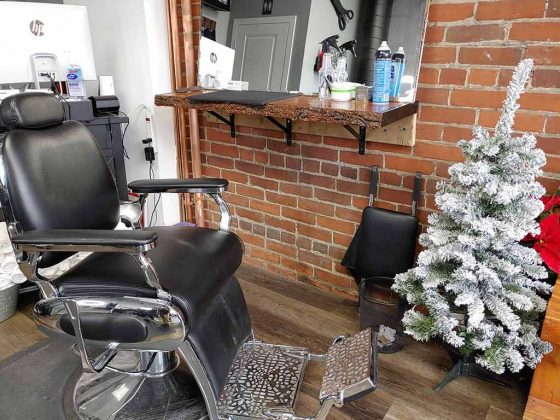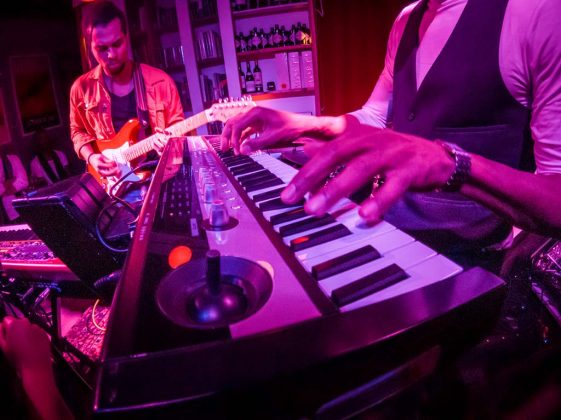
LG is back with the G8X ThinQ, the latest iteration of the company’s flagship smartphone, and tries some new things to stand out from the rest of the pack. The G8X ThinQ isn’t a true “foldable” phone in that it’s not a device that folds out to piece together a larger display. It’s a premium phone you can slide into a case that happens to also include its own separate screen. LG is not the first to try this kind of form factor, but it’s likely the first time you will have encountered something like it.
LG G8X ThinQ Dual Screen SpecsDisplay: Dual 6.4-inch 2340 x 1080 OLED displays with 403 pixels per inch |
Design
The G8X ThinQ has a 6.4-inch OLED display on its own. Attach it to the case, and you get another 6.4-inch display to work with. The two don’t come together by default, yet are often sold together as a bundle. The extra screen is an LG product, so it only works with this phone.
By that measure, the G8X ThinQ has a folding design, only you’re getting two screens instead of one larger one. It’s almost like sandwiching two phones together. If you’re immediately wondering how thick that is, you would be wise to think about it. When in its case, it is noticeably thicker and heavier, conveying the opposite of what most phones are these days.
The benefit is that you feel like you’re using something a little more rugged. Mind you, the case isn’t like an OtterBox, with shockproof and waterproof protection. It’s just extra cushioning, albeit with a second screen that’s still relatively fragile. Even more so because the main phone itself has water-resistance, whereas the second screen doesn’t, adding to the fragility.
Under the hood, the G8X ThinQ isn’t all that different from the G8 ThinQ that came earlier this year. The screen and battery are slightly larger, but the internal components are largely the same. Processor, RAM and internal storage are no different, for example. The front-facing camera is a bigger 32-megapixel shooter for grander selfies, while the rear camera dual-lens setup is mostly intact.
You still get the dedicated Google Assistant button on the left side under the volume buttons. The interface is pretty much a carryover from the previous G8 ThinQ, so there aren’t too many surprises there, either.

The second screen
Using the G8X ThinQ out in public, I got a few questions from bystanders wondering what kind of device I was using. If LG was looking to turn a few heads with this device, it certainly happened in my time with it.
And I can see why. Foldable phones are still unknown territory for most people, and while this isn’t exactly what a foldable is supposed to be, it has use cases that are unique to smartphones. Think of how you might use an additional screen on your computer. You could move over supporting apps and documents to that screen, while focusing on a task on the primary display. That’s how I felt using this.

LG designed the two screens to work in tandem, yet separate from one another. It makes multitasking much easier than on any other smartphone, save for the Samsung Galaxy Fold. I often had one app open on one screen, while doing something on another. It could be a soccer game on DAZN, with email or messaging on the other. I never had to back out of an app to get to another one. It soon became so routine to almost do two things at once that I missed it on other phones I was using.
I tried two different web browsers open at once to research the same topic, or browse different stores. When shooting photos, the preview photo would appear on the second screen, so I could see it while still shooting others. Never before have I seen a phone that almost mimics the experience of tethering a camera to a laptop or phone.
The front portion of the case has a strip noting the time, date, battery level, and notifications. It’s great, but it’s also a big fingerprint magnet.

Performance
The second screen served other purposes too. Since it can tilt back all the way, I used it as a kickstand to prop up the main screen to watch a video. I could also angle it when taking long exposure photos. LG even added a “Game Pad” mode that lets you play games on the second screen in landscape mode, while the main screen displays the buttons and controls. It’s almost like a reimagined Nintendo DS.
Not every game will utilize this setup, unfortunately, so it’s a little hit or miss right now. You may have the option to customize the setup, but it could depend on the game.
Some apps also made use of the unique dual-screen arrangement. For example, if I was in Gmail and switched to landscape mode, the second screen would show the field, while the main screen laid out a full keyboard. Texting and messaging was often a similar experience. I’m not used to texting or emailing in landscape, so I didn’t try it often, but I imagine some users might dig it.

LG made it possible to swap displays, so if I was watching YouTube on the main screen and wanted to look up something mentioned in a video, I could swing it over to the second screen and launch a web browser on the main one. If I wanted to put either screen to sleep, I could do that too. I could also turn off the second screen until I needed it again. It’s all easy to do through a floating menu situated on the right edge of the main screen. Tapping it lays out the handful of options.
I did try using the phone on its own as well, only to sometimes lament that I didn’t take the second screen with me.
Camera
LG has been consistent over the last four years in putting good cameras into its phones. The G8X ThinQ doesn’t have all the bells and whistles the regular G8 ThinQ has—namely the Time-of-Flight sensor—but it holds up well in any case.
Under optimal conditions, where natural light is at least decent, the phone can shoot really well. Photos I got were vibrant, showing some good dynamic range. LG’s Night View mode is okay at illuminating really dark scenes, but not as good as competitors, like Google and Apple. The Manual mode is still among the best in the business, and well worth learning if you want to get more out of the camera. Also, LG lets you use both lenses in that mode, unlike Samsung.
Thankfully, LG also backed off on some of the gimmicky and finicky stuff they tried before, like AI determining what kind of composition you were going for, as an example. I don’t mind a little machine learning help, but I prefer it to be subtle.
The front-facing camera looks beastly on paper, given all the megapixels. I’m not a selfie person, and from what I’ve seen, you can get good ones, except portrait shots may be prone to blurring part of you when applying a bokeh effect.

Battery life
The G8X ThinQ may have a bigger battery, but it depends on what you’re doing with it. When using the phone alone, battery life is excellent, lasting well past a day on one charge with moderate usage. Bring in the second screen, however, and that number is cut down significantly. Again, it is relative, so it depends on how much you’re using it, but it’s a trade-off when one battery is powering two identical screens.
It may surprise you that the phone and case support wireless charging. Even when in its case, it will charge on any Qi-enabled charging pad. While the phone itself uses USB-C, the case has a different connector that is included in the box as an adapter, so you don’t have two different cables.
Final thoughts
I wasn’t sure what to expect from the G8X ThinQ when I first got it. I went in with an open mind and just tried different ways to incorporate the second screen. Over time, it all grew on me, and I found myself wanting a second display as a way to multitask and be productive. I just wasn’t always thrilled with the thickness and weight.
I tested this in the fall with winter approaching. More layers also mean more pockets, making it easier to carry the phone around. In the summertime, however, I can see how this phone might be more cumbersome. To me, that’s the one knock against it, but since the second screen is optional, it’s not a zero-sum choice. As odd as the phone is, I can say that it’s one of my favourites that I’ve used in 2019.
The LG G8X ThinQ is available now.












This phone certainly looks interesting. I wonder though, can I run multiple instances of the same program by opening it on each screen? It might help me in Pokemon Go!
Other screen can be use as gaming pad
Comments are closed.